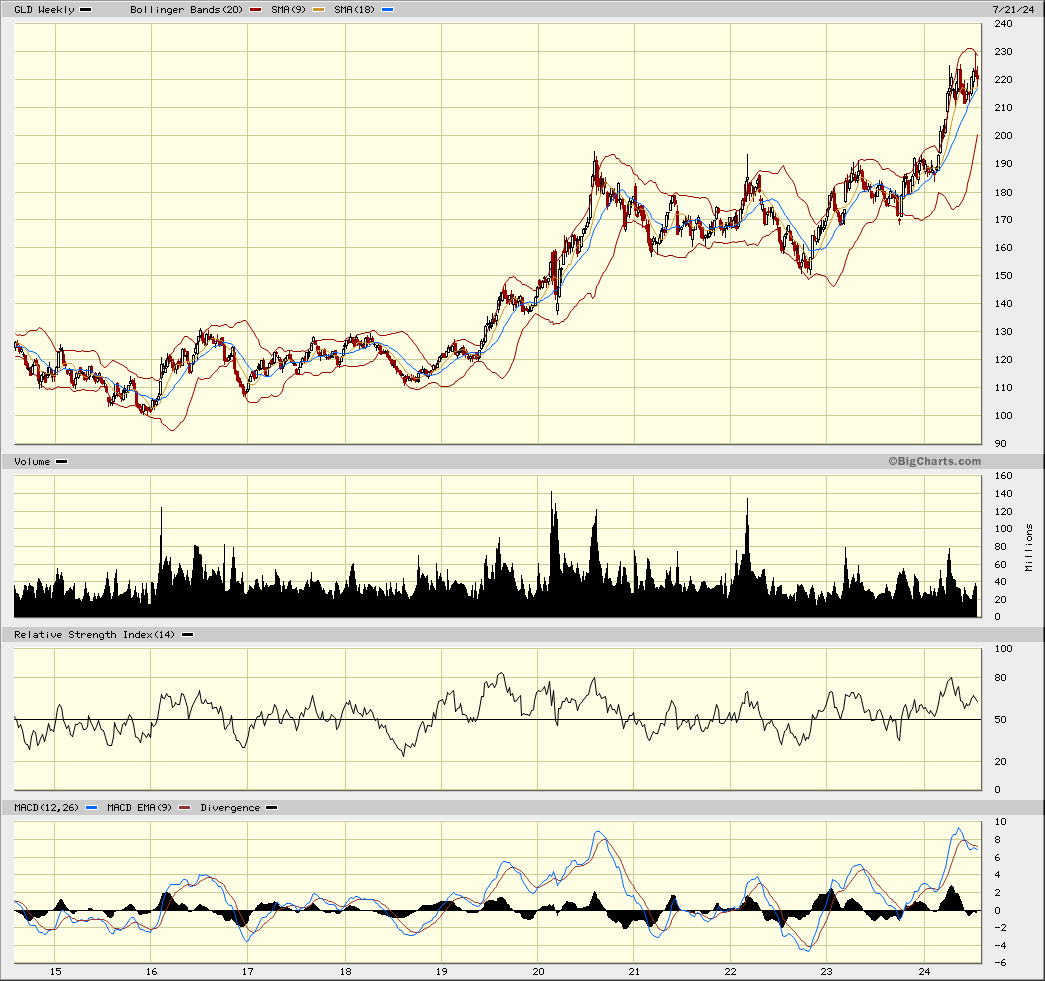
With Gold Trading At All Time Highs, Who's Laughing Now
Gold, often regarded as a safe-haven asset, has been trading near all-time highs, capturing the attention of investors and economists worldwide. Several key economic factors are driving this surge, making gold a hot commodity for investment managers. Here, we delve into three factors for its price rise.

Inflationary
One of the primary drivers of gold prices is inflation. As the purchasing power of the US dollar declines, investors have reflexively turned to gold to preserve their wealth. Inflation erodes the value of money, and gold, with its historical role as a store of wealth and becomes an attractive hedge. In recent times, expansive fiscal policies and unprecedented monetary stimulus by central banks, particularly in response to economic crises, have raised inflation fears. This has prompted investors to flock to gold, driving up its price.
Currency Depreciation
Central banks around the globe have been on a gold-buying spree, diversifying their foreign exchange reserves away from the U.S. dollar. This increased demand for the precious metal has significantly impacted its price. Currency volatility, particularly involving major currencies like the US dollar, significantly influences gold prices. It's often inversely correlated with the US dollar; meaning when the dollar weakens, gold prices tend to rise, and vice versa. A weaker dollar makes gold cheaper for holders of other currencies, boosting demand. Factors contributing to currency volatility include divergent economic policies, trade imbalances, and shifts in investor sentiment. The recent fluctuations in currency markets, driven by varying economic recoveries and policy responses, have led to increased demand for gold as a stable alternative.
Economic Uncertainty and Geopolitical Tensions
Economic uncertainty and geopolitical tensions significantly impact gold prices. Gold is considered a "safe haven" during periods of instability. Events such as trade wars, political upheavals, or military conflicts create uncertainty, prompting investors to seek refuge in gold. The COVID-19 pandemic, for example, has led to significant economic disruption and uncertainty, contributing to a heightened demand for gold. Additionally, ongoing geopolitical tensions in various regions add to the anxiety, further boosting gold's allure as a stable investment.
Conclusion
The surge in gold prices is a complex interplay of various economic factors. Inflation fears, economic and geopolitical uncertainty, low real interest rates, currency volatility, and robust investment demand collectively contribute to gold's allure as a valuable asset. As these dynamics continue to evolve, gold is likely to remain a significant player in the financial landscape, attracting investors seeking stability and security in an unpredictable world.
This information is intended for general knowledge and informational purposes only, and does not constitute financial advice. It's crucial to conduct your own research or consult with a qualified financial advisor before making any investment decisions.